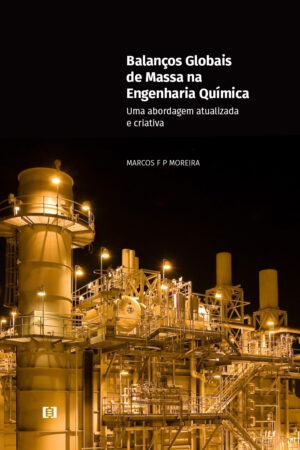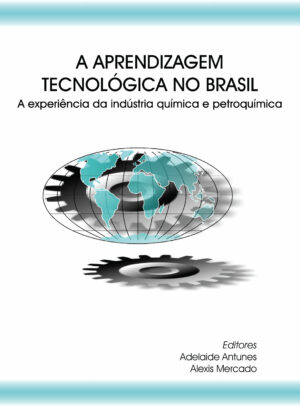Impact of the connections of large-scale wind and solar generation …
This book describes the results of the research and development project called Impact of the Connections of Large-Scale Wind and Solar Generation in the Brazilian Interconnected Power System.
-
A versão digital é distribuída em PDF, para uso individual (pessoa física). Você deverá usar o seu CPF (somente números) como senha para acesso ao PDF.
-
O envio da versão impressa é feito pelos Correios, e o prazo estimado é de 3-15 dias úteis, dependendo do método escolhido.
The growth of installed capacity of wind and solar generation in Brazil has exceeded expectations. Currently, the country has 19.3GW of wind generation and 4.7GW of centralized solar generation, representing 11.2% and 4.7% of installed power, respectively. In addition, distributed photovoltaic generation has reached the installed capacity of 6.7GW. Wind and solar generation have certain characteristics that cause difficulties in the operation of a power system. Some of these characteristics are intermittence, inflexibility of dispatch, absence or decrease of rotational inertia, difficulties to contribute to frequency and voltage controls, etc. These characteristics show the need for complex studies of alternative operation strategies to ensure quality and safety of supply, including the reduction of the likelihood of blackouts. Expansion planning studies are also affected by these recent technologies. The definition of an appropriate operational reserve, with flexible plants such as natural gas thermal units, or storage systems based on pumped-storage hydroelectric plants, battery energy storage systems, compressed air, and others, are considered alternatives to overcome the unpredictability and non-controllability of wind and solar sources.
This book describes the results of the research and development project called Impact of the Connections of Large-Scale Wind and Solar Generation in the Brazilian Interconnected Power System executed by Fundação Coppetec (COPPE/UFRJ) in association with Powerconsult for the State Grid Brazil Holding (SGBH). The project was developed in collaboration with CEPRI (China Electric Power Research Institute), aiming to incorporate the Chinese experience in the integration of substantial amounts of renewable energy into the power system. The ONS (Brazilian System Operator) cooperated in the execution of the project by providing information and data as well as expert advice. The EPE (Energy Research Office) participated in the project follow-up meetings as observers.
The main purpose of this project was to study the impacts of the insertion of intermittent sources of generation, particularly wind and solar, on the performance of the Brazilian Interconnected Power System (BIPS), in relation to its operational safety, protection performance, frequency and voltage regulation capacity, energy quality, etc. The study considered the stochastic characteristics of wind and solar production in different analysis windows.
The book is organized in the following chapters:
- Introduction: Describes the main objectives and stages of the project.
- Assumptions, Tools, and Data Used in the Studies: The basic assumption was to study the impact of wind and solar generation using as references short and long-term expansion plans published by ONS and EPE. The computational tools used were ANAREDE, ANATEM, and PSCAD. Also, some experiments were conducted with the ADPSS developed by Cepri. The data used in the studies were obtained in the databases of ONS and EPE.
- Chosen Scenarios: Defines the scenarios used in the short-term and long-term studies that were based on the PAR 2020-2024 (ONS) and PDE 2029 (EPE), respectively.
- Steady State and Electromechanical Dynamic Studies: Describes the studies performed with the ANAREDE and ANATEM simulators, using the chosen scenarios, with respect to the impact of inertia reduction on frequency control, investigation of the behavior of HVDC systems embedded in the AC transmission systems, and Fault-Induced Delayed Voltage Recovery (FIDVR).
- Electromagnetic Simulation Studies: Introduces the methodology developed for studies in electromagnetic transients in large-scale systems based on the use of the Frequency Dependent Network Equivalent (FDNE), obtained using the HarmZs software, and its application in the SIN.
- Methodology for Probabilistic Steady State and Electromechanical Dynamic Assessment: Presents a developed probabilistic methodology based on the Monte Carlo simulation methods and using the software ANAREDE and ANATEM as the simulation engines. Probabilistic models for the load and wind generations, based on information from the EPE and ONS databases, are presented and used in the probabilistic analysis of one of the chosen scenarios in this project.
- Diagnostics, Alternatives, and Recommendations: This chapter summarizes the main results obtained in the project.
- Conclusions: This section presents a perspective view of the impacts caused by wind and solar generation and a vision of the future of this technology in the expansion of the SIN.
This work identified a series of operational difficulties arising from the elevated increase in the proportion of wind and solar generation in the installed capacity of the BIPS. However, none of these difficulties alone, or the conjugate action of them, represents an insurmountable impediment to the adoption of these generation technologies as the main option for the BIPS generation expansion.
In parallel with the advances in the technology of wind and solar generation, which has made these sources the best economic and environment option, advances in power electronics and control techniques in general, as well as in storage technologies, has made available resources to deal with the difficulties imposed by the variability of these sources.
The investigations conducted in this project have demonstrated that the BIPS, with minor adjustments in its operating policies, may be able to cope safely with the amount of wind and solar generation forecasted to be installed in the studied horizons and even still work well with a substantial increase in the predicted values. Moreover, some recent technologies just appearing in the technical horizon, like the grid following inverter control systems, new HVDC technologies, etc., are probably able to open even a larger space for the generalized insertion of variable energy sources in the BIPS.
As usually happens in research and development projects, in this one, the results yielded were beyond the forecasted ones. Apart from checking the control and operation viability to support the tested amount of wind and solar generation in the studied scenarios, the project has investigated and proposed innovative solutions to adjacent questions arising from the present and future configurations of the BIPS. The main suggested solutions are:
- – Proposal of a new type of adjustment in ERAC, in addition to considerations on the use of synthetic inertia, control of active power injection in wind generators, and use of energy storage in batteries.
- – Proposal of a special protection system to prevent the shutdown of wind generators caused by delay in the recovery of voltage after a fault (FIDVR).
- – Proposal of an angular difference control between DC link converter buses for system loss reduction and loop flow mitigation.
- – Recommendations regarding the improvement of component models, particularly loads and generators, and computational tools used in BIPS studies, to take into account the technological changes already implemented in the system and with short-term deployment forecast.
- – Proposal to use a new procedure for the production of BIPS equivalent to be used in studies of electromagnetic transients.
- – Proposal of a probabilistic methodology for the simulation of behavior in steady-state and electromechanical dynamics of the BIPS to take into account the randomness of wind and solar generation and load, including prototype of a probabilistic simulation software using the software ANAREDE and ANATEM as simulators.
1 Introduction
2 Assumptions, Tools, and Data Used in the Studies
3 Chosen Scenarios
3.1. Medium-Term Horizon: PAR/PEL 2024
3.2. Long-Term Horizon: PDE 2029
4 Steady State and Electromechanical Dynamic Studies
4.1. Study Overview
4.2. Investigation of the Behavior of HVDC Systems Embedded in the AC Transmission Systems
4.3. Fault-Induced Delayed Voltage Recovery (FIDVR)
5 Electromagnetic Simulation Studies
5.1. Methodology Description
6 Methodology for Probabilistic Steady State and Electromechanical Dynamic Assessment
6.1. Probabilistic Assessment Conceptual Framework
6.2. BIPS Probabilistic Assessment
6.3. Research of Probabilistic Models of Wind Generation in the Northeast Region
6.4. Probabilistic Models of Load Profile in the Northeast Region
6.5. Monte Carlo Simulation Software
6.6. BIPS Study
7 Diagnostics, Alternatives, and Recommendations
7.1. Frequency Control in High Wind Generation Scenarios
7.2. Fault-Induced Delayed Voltage Recovery (FIDVR)
7.3. Suggestion of an angular difference control between the HVDC link converter buses
7.4. Computational Tools and Models
7.5. Application of WPP equivalent methodology for wind impact assessment for EMT simulation
7.6. Probabilistic Assessment
8 General Conclusions
9 References
About the authors
Somente clientes logados, que já compraram este produto, podem deixar um comentário.













Avaliações
Não há comentários ainda.